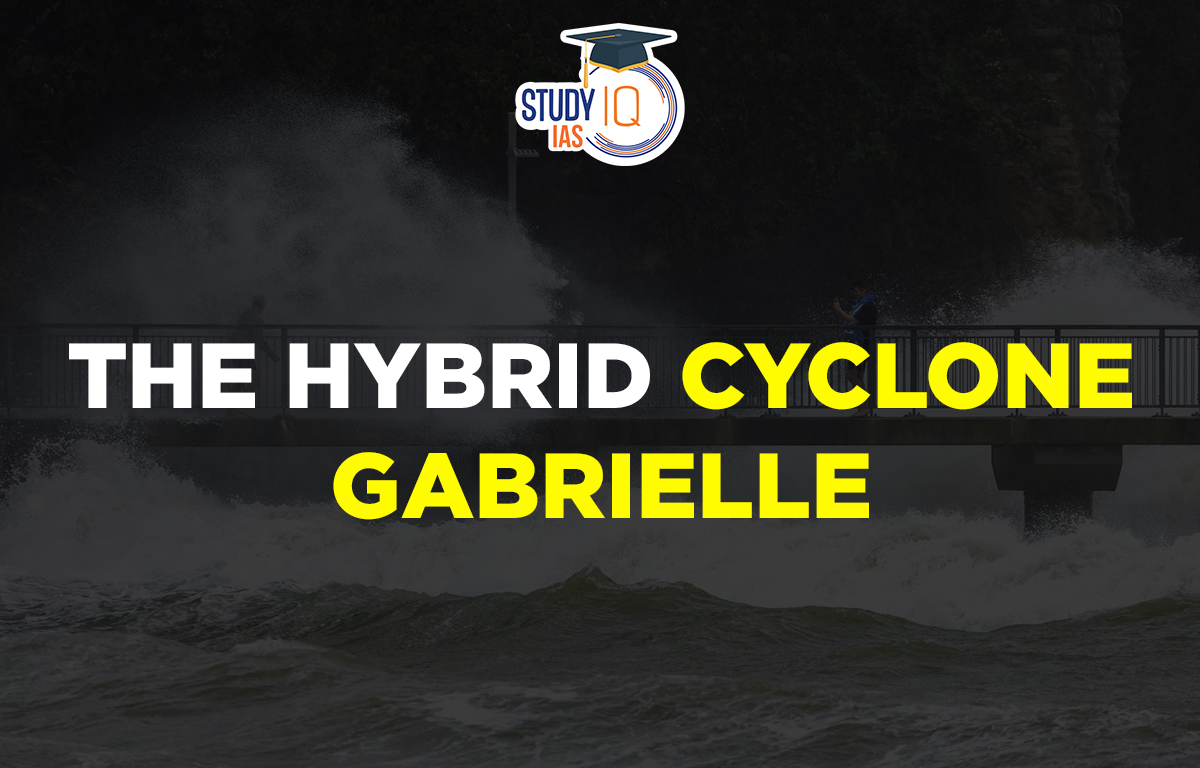Table of Contents
Context: New Zealand has declared a National State of Emergency for just the third time in history as Cyclone Gabrielle causes wide spread flooding, landslides and huge ocean swells across the North Island.
About the Cyclone Gabriell

- Origin: Gabrielle started late last week as a tropical cyclone in the Coral Sea and intensified very quickly to a category 3, fuelled by very warm oceans.
- Extra tropical transition (ET): The Cyclone Gabrielle has undergone a process called extra tropical transition, where a tropical cyclone moves out of the tropics to cooler waters, its characteristics began to change and interact with other weather factors that exist in the mid-latitudes.
- Hybrid cyclones: When a cyclone undergoes ET, they are often termed as Hybrid cyclones as they exhibit characteristics of both tropical and extratropical cyclones.
- What happens during the ET?
- During ET, the warm core of the tropical cyclone is replaced by a cold core as the system interacts with the colder environment.
- The energy source of the storm shifts from the latent heat of condensation in the tropical cyclone to the temperature contrasts in the extratropical environment.
- The cyclone also begins to take on characteristics of an extratropical cyclone, such as the development of frontal boundaries and a larger wind field.
- Characteristics: Hybrid cyclones have a vertical structure showing features partially similar to both tropical cyclones and extratropical cyclones.
- In particular, they have a warm core in the lower part of the troposphere and a cold core in the upper part.
- Impacts of ET: The impacts of ET can vary depending on the storm’s location, size, and intensity.
- In some cases, the transition can lead to a weakening of the storm and a reduction in the amount of rainfall.
- While in other cases, the storm can intensify and produce heavy rainfall and strong winds as an extratropical cyclone.
What are Cyclones?
- Cyclones are rapid inward air circulation around a low-pressure area whereas anti-cyclones are circulation of winds around a high-pressure area.
- Types: There are two types of cyclones.
- Tropical cyclones (also called typhoon or hurricane, an intense circular storm that originates over warm tropical oceans).
- Extra Tropical cyclones (also called temperate cyclones or middle latitude cyclones or Frontal cyclones or Wave Cyclones).


Differences between Tropical and Extratropical Cyclones
| Feature | Tropical Cyclones | Extratropical Cyclones |
| Location | Form in the tropics, within 10-30 degrees latitude | Form outside the tropics, typically between 30-60 degrees latitude |
| Energy source | Derive energy from warm ocean waters | Derive energy from temperature contrasts in the atmosphere |
| Structure | Often have a well-defined eye and eyewall with intense winds and heavy rainfall | Typically lack an eye and have a broader wind and rain field associated with fronts |
| Movement | Move relatively slowly and maintain their structure over several days | Move more rapidly and often dissipate or merge with other systems as they travel |


 Daily Quiz 05 July 2025
Daily Quiz 05 July 2025
 SSC MTS Apply Online for 1075 Posts – ...
SSC MTS Apply Online for 1075 Posts – ...
 Dynamic Pricing: What It Is and Why It's...
Dynamic Pricing: What It Is and Why It's...





















